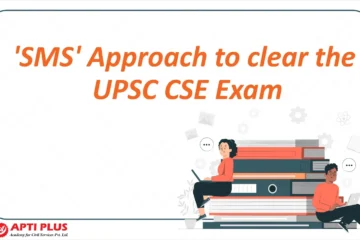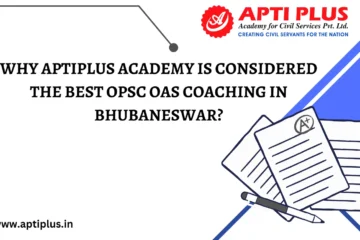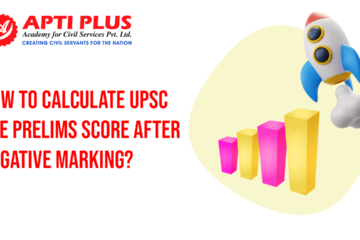RUSSIA UKRAINE CONFLICT
SUBJECT MATTER:
The Russia-Ukraine war has led to an escalation of world unrest. In response, diverse sanctions have been imposed on Russia.
MORE FROM THE NEWS:
- The Russia-Ukraine conflict is now the largest attack on Europe since World War II.
- With the Ukrainian invasion, agreements such as the Minsk Protocols come to naught.
- The G7 countries strongly condemn Russia’s invasion of Ukraine.
- Penalties imposed by the U.S., European Union (EU), UK, Australia, Canada and Japan.
- China has refused to call the Russian movement in Ukraine an “attack” and called on all sides to hold back.
- India did not agree to the US-sponsored UNSC agreement saying dialogue was the only solution to the conflict resolution and expressed regret that the negotiation process was stopped. China also withheld, along with the UAE.
WHAT ARE THE ROOTS OF THE RUSSIA-UKRAINE CONFLICT?
- Ukraine, which was part of the Russian state centuries before it became a Soviet republic, gained independence as the USSR split in 1991.
- The country has moved away from losing its Russian empire and forging closer ties with Western countries.
- The decision by Kremlin-based Ukrainian President Viktor Yanukovych to reject a European Union cooperation agreement in favor of Moscow’s provocation sparked major protests that led to his ouster in 2014.
- Russia responded by taking over the Crimean Peninsula of Ukraine and contributing to the uprising that erupted in eastern Ukraine.
- Ukraine and the West blamed Russia for sending troops and weapons to support the rebels. Moscow denied the allegations, saying that the Russians who joined the separatists were volunteers.
- More than 14,000 people have been killed in a war that destroyed an industrial base in eastern Ukraine known as the Donbas.
- The 2015 Peace Treaty established by France and Germany helped end the major wars, but efforts to find a political solution have failed, and ongoing conflicts have continued within the tight line of communication.
- The latest conflict began in mid-December when Russia informed Western powers, including the US, that it had a list of demands.
- Russia seeks confirmation from the West “in writing” to stop any NATO expansion east, the withdrawal of NATO troops from Poland and the Baltic regions, and the possible withdrawal of US nuclear weapons from Europe. Most important of its demands include that Ukraine should never be allowed to join NATO.
- The US and the West have dismissed this.
PROTESTS IN UKRAINE:
- Euromaidan Movement: Euromaidan (European Square) was a wave of civil unrest in Ukraine, which began in November 2013 with civil protests in Maidan Nezalezhnosti (“Independence Square”) in Kyiv, Ukraine. The protests stemmed from the Ukrainian government’s decision to suspend the signing of an agreement with the European Union, instead opting for closer ties with Russia and the Eurasian Economic Union.
- Separatist Movement: The Donbass region (Donetsk and Luhansk regions) in eastern Ukraine has been facing an organization supporting Russian secession since 2014.
MINSK AGREEMENTS:
- Minsk I: Ukraine and Russian-backed separatists agree to a 12-point ceasefire agreement with the Belarusian capital in September 2014. Its provisions included the exchange of prisoners, the delivery of humanitarian aid and the withdrawal of heavy weapons. The agreement quickly collapsed, with both parties breaking the agreement.
- Minsk II: In 2015, the Russia-Ukraine open conflict was banned after the signing of the ‘Minsk II’ peace agreement, under French and German mediation. It was designed to end hostilities in rebel regions and provide a border for the Ukrainian armed forces. It was signed by representatives of Russia, Ukraine, the Organization for Security and Cooperation in Europe (OSCE) and the leaders of the two regions that support Russia.
WHAT DOES MOSCOW WANT?
- The Kremlin has blamed Ukraine for failing to honor the 2015 peace agreement and criticized Western nations for failing to promote compliance with Ukrainian law.
- The agreement was to overthrow Moscow, requiring Ukraine to grant greater independence to the rebel regions and to provide amnesty for the rebels.
- Ukraine, on the other hand, has demonstrated a violation of the ceasefire by Russian-backed separatists and insists the continued presence of Russian troops in the east despite the Kremlin’s denial.
- Amid allegations, Russia has cancelled a four-state agreement with Ukraine, France and Germany, saying it was “unhelpful” by Ukraine’s refusal to comply with the 2015 agreement.
- Moscow strongly criticizes U.S. and its NATO allies by supplying Ukraine with weapons and holding joint drills.
- Putin boldly stated that Ukraine’s military effort to repatriate the east would have “serious consequences for the Ukrainian nation.”
- The Russian president has repeatedly described the Russians and Ukrainians as “one people” and says that Ukraine has wrongly acquired historical sites in Russia during the Soviet era.
- Putin says NATO may use Ukraine as a target for Russian missiles.
- Some observers interpreted the military formation as Putin’s indication that Russia is willing to raise its stakes to convince NATO to respect Moscow’s red flags and to stop sending troops and weapons to Ukraine.
WHAT IS THE ROLE OF THE US IN THE RUSSIA UKRAINE CONFLICT?
- The Cold War ended 30 years ago but one unresolved issue – how well Ukraine can cooperate with the West – now creates deep-seated US-Russian tensions over the years.
- In the United States and the European Union, Ukraine is a vital link between Russia and the West.
- As tensions with Russia grow, the US and the EU are increasingly determined to keep Ukraine under Russian rule.
- Leaders of France, Germany, Italy, Britain and the United States have expressed “determination” that the Ukrainian sovereignty should be respected.
- All leaders stressed the need for Russia to re-engage in negotiations with Ukraine, as part of the “Normandy Four” group under France and Germany.
- The United States was ready to expand its military presence in Eastern Europe in the event that Moscow invaded Ukraine.
WHAT IS HISTORY CONNECTION?
- Russia and Ukraine were connected since the 9th century when Kyiv became the capital of the ancient Russian region.
- Beginning in 1654, the two were united by treaty under Russian rule.
- They spoke closely related languages ??and later formed, with Belarus, a Slavic base in the Soviet Union.
- It was in the middle of the 19th century that, in order to meet the growing Ukrainian national organization, the intellectuals of the Russian empire developed the idea of ??three Russian nations comprising the Great Russians, the Little Russians, or Ukrainians, and the White Russians, or Belarusians.
- When the Tsar regime collapsed following the Lenin-led revolution, the Ukrainian people adopted their own status and declared their independence in January 1918.
- Although it was short-lived as the Bolsheviks occupied a large part of Ukraine in Russia in 1920, that two-year period sowed the seeds of independence among the Ukrainian people.
- It was a Ukrainian referendum of 1991, in which more than 90% of participants voted to leave the USSR, which marked the end of the Cold War.
IS THERE A GEOGRAPHY AND ANGLE OF RESOURCES ALSO?
- After Russia, Ukraine is the second largest country in Europe.
- It has large Black Sea ports and shares borders with four NATO countries.
- Europe is dependent on Russia for about a third of its natural gas – which gives Putin greater power in any conflict with Western countries – and one of the major pipelines passes through Ukraine. Controlling this area of ??Ukraine will improve the safety of Russian pipelines.
WHERE IS INDIA IN RUSSIA UKRAINE CONFLICT?
- Indian response: Ask for a peaceful resolution of the situation with ongoing efforts to bring lasting peace and stability to the region and beyond.
- With key strategic partners on both sides, India cannot afford to take any immediate action that damages its key pillars.
- Although there are concerns about Russia’s “muscle-flexing”, Delhi does not want to jeopardize its close military ties with Moscow, especially during its separation from China on the east border.
- India is well aware that hostilities between the West and Russia could push Moscow towards Beijing.
- There is an Indian community in Ukraine, most of whom are students in medical colleges.
- By the time Russia took over Crimea, India had expressed “concern” but was also justified in speaking of “Russia’s legitimate interests”.
- Recalling its relations with Russia, sources said, India did not issue any condemnation statements as was the case with Western powers.
- In the meantime, Delhi hopes the situation will be resolved by skilled negotiators on both sides.
INDIA-UKRAINE RELATION:
Political relations
- India has had friendly relations with Ukraine even when the latter was a republic part of the Soviet Union.
- Ukraine has been positively co-operating with India at the international level.
- Ukraine supports the resolution of the issue of Jammu & Kashmir on the basis of Simla agreement. Ukraine also supports reforms of the UN structure.
Education:
- According to the Indian Embassy in Ukraine, there are more than 18,000 students studying medical or engineering in the country.
- India offers training programs to Ukraine under:
- ITEC (Indian Technical and Economic Cooperation) program, which offers training or capacity building programs in different centers of excellence in India.
- ICCR (Indian Council for Cultural Relations) scholarship, which offers higher-level courses covering wide range of subjects in eminent Indian Institutions.
- Kendriya Hindi Sansthan Scholarship programm, which offers scholarships to foreign students to pursue higher-level Hindi language courses.
Diplomatic relations
- India was one of the first countries to recognize Ukraine. Government of India recognized the Republic of Ukraine as a sovereign country in December 1991.
- India and Ukraine established diplomatic relations in January 1992.
- Ukraine opened its Mission in Delhi in February 1993 – its first in Asia.
- More than 17 bilateral agreements have been signed between India and Ukraine, including agreements on Co-operation in Science and Technology, Foreign Office Consultation, Co-operation in Space Research, Avoidance of Double Taxation and Promotion and Protection of Investments.
Science and technology relations
- Under the Agreement signed between India and Ukraine in May 1992, the Joint S&T Committee meets annually to discuss implementation of projects, holding of exhibitions and co-operation in scientific research.
Trade:
- Ukraine is India’s second largest trade partner after Russia in the former Soviet Union.
- In March, 1992 the Treaty on Friendship and Co-operation was signed between India and Ukraine, providing a major boost to India-Ukraine trade relations.
- India was the 15th largest export and the 2nd largest import market of pharmaceutical products for Ukraine in 2020. As for India, Ukraine is the 23 rd largest export market and the 30 th largest import for India in the same category.
- India had a trade deficit of $1.7 billion with Ukraine in 2020. The number is inclusive of exports which stood at $438.3 million and imports of $2.1 billion.
- India major exports to Ukraine are electrical and electronic equipment, plastics and related articles, oil seeds, oleagaic fruits, grain, fruits, seeds and chemical products.
- India’s major imports from Ukraine are animal, vegetable fats and oil, cleavage products- totalling to $1.6 billion in terms of value in 2020 and fertilisers which stood at $232.8 million.
INDIA RUSSIA RELATIONS:
- India and Russia have enjoyed good relations since 1947.
- It started with a visit by the then Indian PM Nehru to the Soviet Union in 1955 and the First Secretary of the Communist Party Khrushchev’s return trip during the same year.
- India and the Soviet Union signed the Treaty of Peace and Friendship in August 1971
- After the dissolution of the Soviet Union, India and Russia entered into a new Treaty of Friendship and Cooperation in January 1993 and a bilateral Military-Technical Cooperation agreement in 1994.
- In 2000 both countries established a Strategic Partnership.
- In 2010, it was elevated to the level of a “Special and Privileged Strategic Partnership.”
- PM Modi is the first Indian Prime Minister to visit the Russian Far East and this visit is intended to give “a new direction, new energy, and new speed” to the bilateral relations.
- Political Relations
- Annual Summit: The Annual Summit meeting between the Prime Minister of India and the President of the Russian Federation is the highest institutionalized dialogue mechanism in the strategic partnership between India and Russia.
- Prime Minister Narendra Modi and President Vladimir Putin held their first informal Summit in Sochi in
- PM Modi was awarded with Russia’s highest state decoration – Order of St Andrew the Apostle.
- Indian Defence Minister undertook a trip to Russia for its ‘Victory Day’ parade, the first high-level visit from India to any country during the pandemic.
- Intergovernmental Commissions: Two Inter- Governmental Commissions – one on Trade, Economic, Scientific, Technological and Cultural Cooperation (IRIGC-TEC), and another on Military Technical Cooperation (IRIGC- MTC) meet annually.
- There are a number of bilateral Interaction/Visits
- International/Multilateral Organizations and Connectivity Projects: BRICS, SCO, Russia has been a long standing supporter of India’s membership of the Nuclear Suppliers Group and Permanent Membership in an expanded UNSC.
- Defence and Security Cooperation
- India-Russia military technical cooperation has evolved from a buyer – seller framework to one involving joint research, development and production of advanced defence technologies and systems.
- BrahMos Missile System as well as the licensed production in India of SU-30 aircraft and T-90 tanks, are examples of such flagship cooperation.
- Furthering this cooperation, an agreement on the cooperation in the production of spare parts for Russian/Soviet military equipment was signed.
- Agreements on supply of S-400 air defence systems, construction of frigates and shareholders agreement on the formation of joint venture to manufacture Ka-226T helicopters in India.
- Production of AK Series Assault Rifles at Ordnance Factory Korwa under the ‘Make-in-India’ program.
- The two countries also hold exchanges and training exercises between their armed forces annually.
- The first-ever Tri-Services exercise –‘INDRA 2017’ took place in 2017.
- Trade and Economic Relations
- Aim is to increase bilateral investment to US $ 50 billion and bilateral trade to US $ 30 billion by 2025.
- From 2013 the total trade between the two countries was on a downward trajectory till 2016.
- In 2019, total bilateral trade between the two countries from January-September, 2019
- Bilateral trade in services has remained stable during the last 5 years with trade balance in Russia’s favour.
- Russian investment in India in 2017 has reached 18bn USD and India’s total investment in Russia so far is 13 bn USD.
- Rosneft acquired ESSAR’s Vadinar refinery in India by concluding a deal in 2017. This deal was USD 12.9 billion, is one of the biggest Russian investments in India in recent times.
- A few important steps/projects that could provide a major boost to bilateral trade are: Operationalization of the ‘Green Corridor’ project; International North-South Transport Corridor, and the signing of an FTA with EaEU.
- India Russia Strategic Economic Dialogue was started in 2018.
- Energy Security
- In Energy sector Russia has built nuclear reactors in India (kudankulam reactors), adopted strategic vision in nuclear energy, offered oil, gas and investment opportunities in the fuel sector of Russia e.g. Sakhalin I etc.
- Both are extending civil nuclear cooperation to 3rd countries, e.g. Bangladesh.
- Space technology
- The former Soviet Union launched India’s first two satellites, Aryabhata and Bhaskar.
- It has provided India Cryogenic technology to build heavy rockets.
- Science & Technology
- The Working Group on Science and Technology, the Integrated Long Term Programme (ILTP) and the Basic Science Cooperation Programme are the three main institutional mechanisms for bilateral Science and Technology cooperation.
- Science Academies of the two countries promote inter-academy exchanges.
- Cultural Cooperation
- There is a strong tradition of Indian studies in Russia.
- As per the reciprocal agreement, regular cultural exchange between India and Russia has been taking place since 2015.
WAY FORWARD:
- A practical solution for the situation is to revive the Minsk peace process.
- Therefore the West should push both sides to resume talks and live up to their commitments as per the Minsk agreement to restore relative peace on the border.
- The tension on the Russia-Ukraine border represents a major security crisis for the region, with the potential to snowball into a broader conflict.
Submit your review | |
aptiplus
Average rating: 0 reviews





